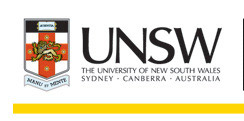By Tim Harcourt*
Reporting from Mexico City and Monterrey, Mexico
One thing I didn’t expect to hear on my visit to Mexico is a lot about Brazil. Mexico
sees Brazil, as the other large economy in Latin America as a bit of a rival fighting for its place in the sun.
This has intensified in Mexico as the world’s attention turns to Brazil in the lead up to the FIFA World Cup in 2014 and the Rio Olympics in 2016. It’s hard enough at the best of times, trying to get anybody looking at Mexico City, but even harder currently, when the whole
world, or so it seems, wants to go to Rio.
And it’s not just about the World Cup and the Olympics. Mexico also sees Brazil as a rival economic model in Latin America. Whilst Mexico had been committed to an open economy, they argue, even in the face its own ‘Tequila crisis’ of 1994-95 and the global financial crisis of 2008, Brazil they say, has resorted to protectionism, particularly against Mexican industrial goods (in the automotive sector in particular). There is a view in Mexico that in Latin America, Mexico, Chile, Colombia and Peru are the good guys committing to openness to trade and
foreign investment (Mexico has the most number of free trade agreements signed in the region, followed by Chile) whilst Brazil leads the bad guys of protectionism with Argentina the baddest guy in town in terms of anti-trade policies. Although, it must be said there is admiration in Mexico for the success that Brazilian President Lula and his successor Dilma had in fighting poverty in Brazil (based on measures they say that Brazil copied from Mexico – of course!)
But regardless of the merit of these endless comparisons with Brazil, Mexico in its own right does have a good story to tell
in recent years.
First, there’s Mexico’s macroeconomic story. Over the past decade, with the exception of the Lehman Brothers crisis affected year
of 2008, growth has been positive territory, with the just over the 3.9 per cent rate of 2012 expected this year. Inflation has been halved over the decade, and the fiscal situation is respectable (fiscal deficit is 2 per cent of GDP and Net Public Sector Debt 34 per cent of GDP – half of Brazil’s and one third the size of the USA’s).the structural reforms of new Mexican President Pena-Nieto in tax, social security, education, pensions and competition policy are expected to achieve a sustainable growth rate of 5 per cent per annum (compared to 2 per cent p.a. over the past decade).
Second, there’s the Mexican globalization story. Mexico is an open economy with trade accounting for 60 per cent of GDP. It can reach
two thirds of the global economy with its plethora of free trade agreements (FTAs) and as both a Pacific and an Atlantic country has strong connections by sea and by air. Mexico is an enthusiastic supporter of the Trans Pacific Partnership (TPP) and the Pacific Alliance within Latin America. The TPP countries represent a market of 658 million people and a combined GDP of US$20.7 trillion, so it has not surprisingly attracted interest from Mexico.
You can see the globalization of the Mexican economy even with a day trip to Monterrey. According to Rolando Zubiran, Deputy Minister
for Foreign Investment for the state, 80 per cent of US-Mexican economic activity passes through Monterrey, with its 2 railroad lines, large automotive sector, healthcare sector and 127 industrial parks. “Our aspiration is to be the ‘Bangalore of Mexico’” he explains. There are strong links between Monterrey and the Asia-Pacific too, including with Australia. Automotive components maker Metalsa is based in Monterey and has plants in Cheltenham and Clayton in South East Melbourne and another auto components maker Katcon manufactures in Keysborough,
Victoria. Food manufacturer Gruma-Maseca is another local company who launched the line ‘Mission flatbreads of the world’ in Australia and is a key sponsor of Prime Minister Julia Gillard’s favourite AFL team, the Western Bulldogs.
Third, there’s Mexico’s ‘demographic dividend’. Mexico’s average age is 26 so it has an enormous supply of human capital hungry for
skills and education. Seeing Rolando Zubiran the young dynamic state official in Monterrey strut his stuff with his young team shows how enthusiastic this generation is for Mexico to succeed. The main question is whether Mexico can keep them and if there will be a reverse of the brain drain that has occurred to the United States in the past.
That’s the good news, I hear you say, now tell me the bad news.
The main risks to Mexican economy are institutional. As the influential book Why Nations Fail, by Daron Acemoglu and James Robinson at MIT and Harvard University respectively, Mexican political institutions have been historically weak, and that has had long run negative economic effects on Mexican entrepreneurialism, competition policy, property rights and democracy.
The first institutional issue is corruption and the related need for structural reform. The new President of Mexico, Enrique Pena-Nieto in his
first six months of office is conscious of the need for economic and political reform in Mexico. The President has just arrested Elba Esther Gordillo, the president of the Mexican Teachers Union for corruption. Gordillo, whom some Mexicans regard as a particularly odious character flaunted great wealth including mansions in San Diego, California, and private jets all allegedly on member’s money. This was quite a shock to an Australian observer for whatever your views on education policy, the teacher unions in Australia are clean as a whistle known for their frugality and carefulness with members’ money. To make matters worse, Mexican teacher salaries are lagging behind the rest of the labour force and are low by international standards.
For this reason, education reform is at the top of the new administration’s agenda along with the related issue of labour reform and
pensions. Gabriel Casillas, Chief Economist of Casa de Bolsa-Banorte, a particularly thoughtful commentator and analyst, believes that pension and payroll tax reform could make a significant impact on Mexican economy by encouraging more workers from the informal sector to join the formal sector of the labour market with enormous implications for productivity, which would boost bank assets and provide a fiscal dividend to the budget with increased direct income taxes.
The second related issue is, of course, security. In key towns and regions in Mexico, security issues have re-emerged in Mexico with drug related gang violence. This is frightening foreign investors and of course, many Mexican citizens themselves. In Monterrey, Rolando Zubiran, who enthusiastically explains the region’s economic success, partially thinks that changes in social media and technology amplify the impact
of isolated violent incidents. But he agrees that there is a problem in terms of both perception and reality. As a result, Mexican will continue to spend a large part of its economic growth dividend on security and public safety.
The third issue is competitiveness and the influence of China. After China joined the WTO, many of the gains Mexico made
with the NAFTA agreement with the USA and Canada, were eroded, particularly in manufacturing. Now as China’s labour market tightens as its demographics work against it (“getting old before you get rich”) it’s expected that Mexican wage rates will be surpassed by China’s
(aside from productivity issues that are notoriously difficult to measure and compare).
And the issue about China brings us back to that old Brazil-Mexico rivalry again. There is a famous story
that was told to me by Dr Alfonso Guerra, a distinguished international official from The Bank of Mexico, Mexico’s
central bank. When told by a Brazilian official that “Mexicans are not Latin American, they are North American. They all speak English as 80 per cent of their exports go to the United States,” the Mexican official apparently replied: “Well then you Brazilians should speak Chinese if you look at your current account.”
Well the Mexicans do have some reason to be wary of Brazil’s increasing global profile when they hold the World Cup in 2014 and Olympics in Rio in 2016. After all who was the last nation in Latin America to host both the World Cup and Olympics within three years? It was Mexico in 1968 and 1970. That was Mexico’s moment, and with Brazil getting the sporting action in 2014-2016, Mexico hopes it will be its economic attributes that will attract the world’s attention in years to come.
*Tim Harcourt is the J.W.Nevile Fellow in Economics at the University of New South
Wales, Sydney, Australia and author of The Airport Economist www.theairporteconomist.com
He travelled to Mexico courtesy of the Australian Department of Foreign Affairs and Trade (DFAT) and
the Council of Australian Latin American Relations (COALAR). Thanks are due to Ambassador Tim George, Rachel Moseley, and Radek Divis for hosting in Mexico City and Monterey.













No Comments so far ↓
Comments are closed.